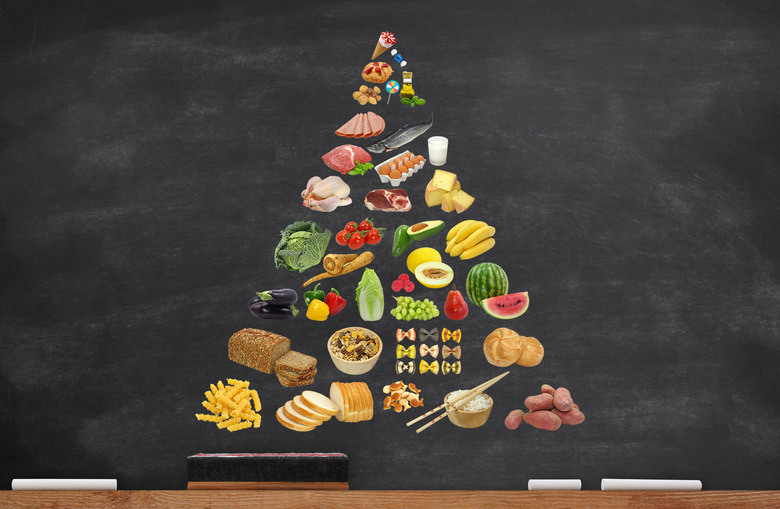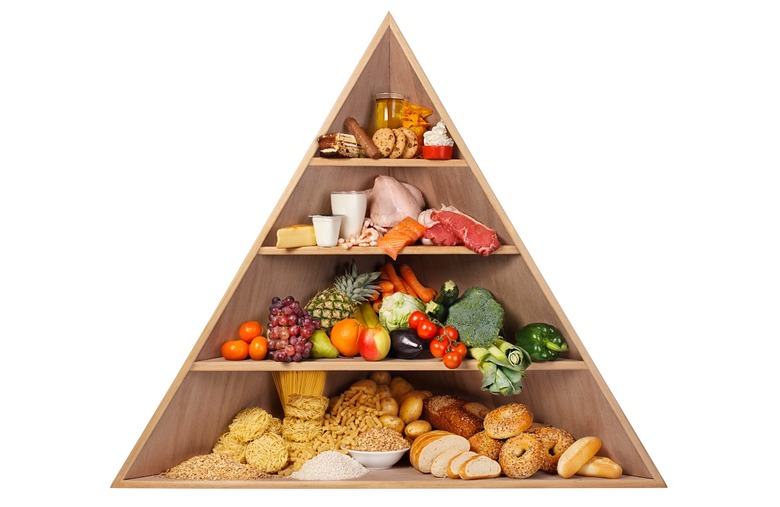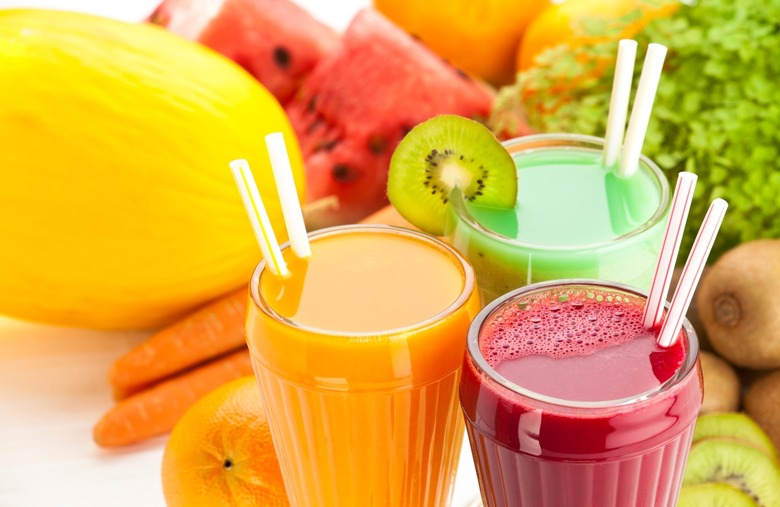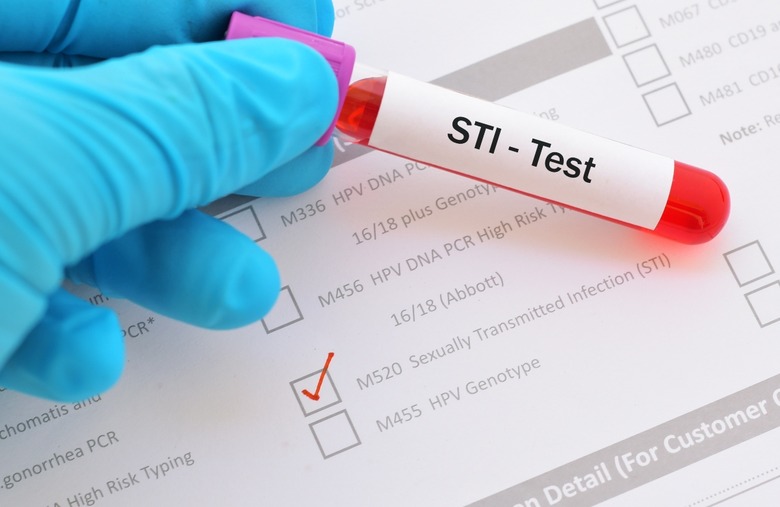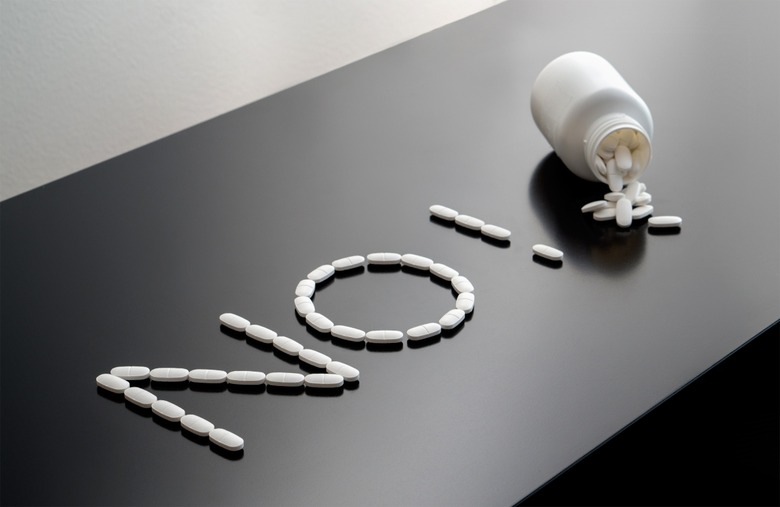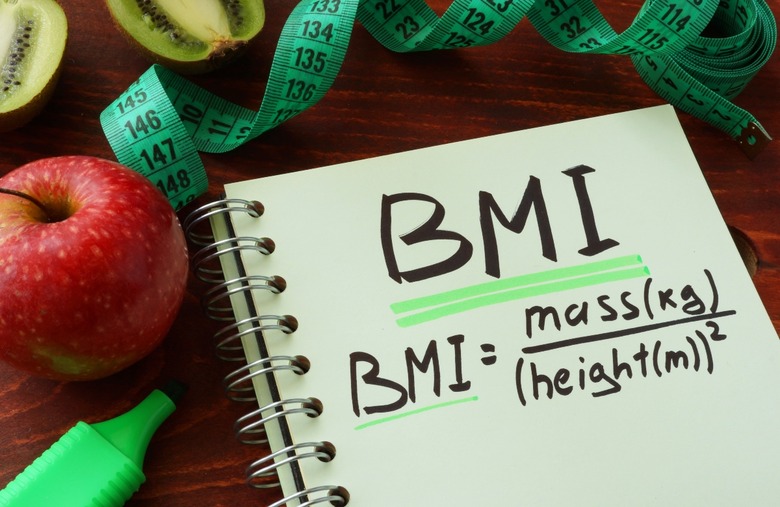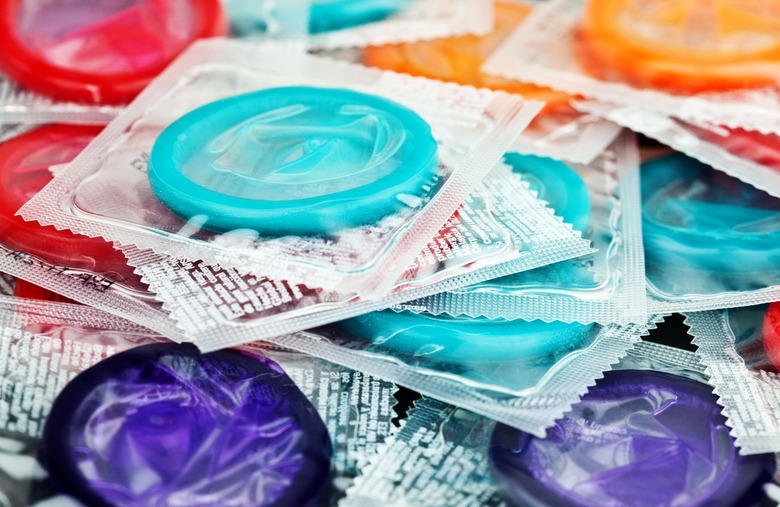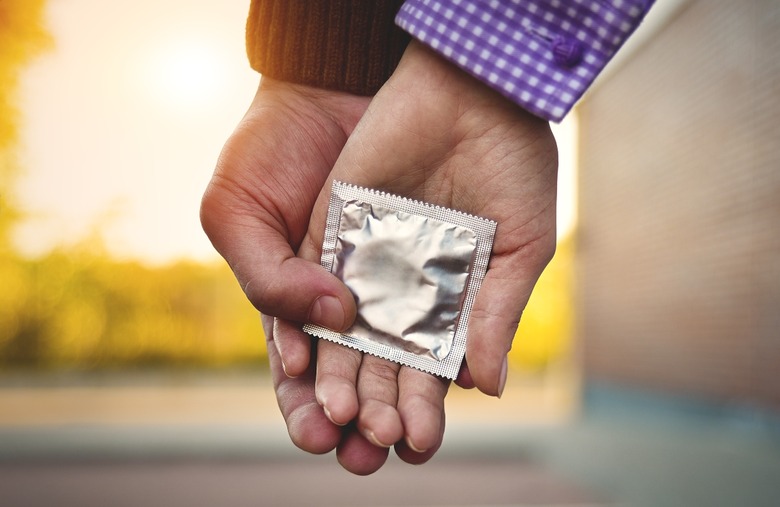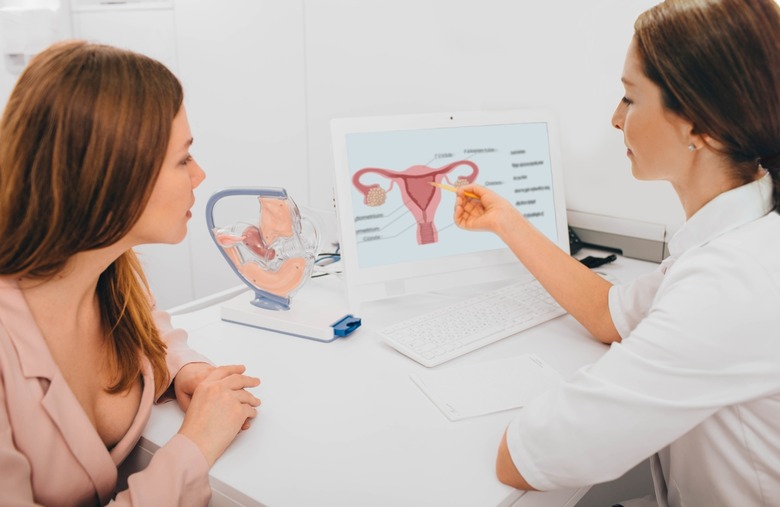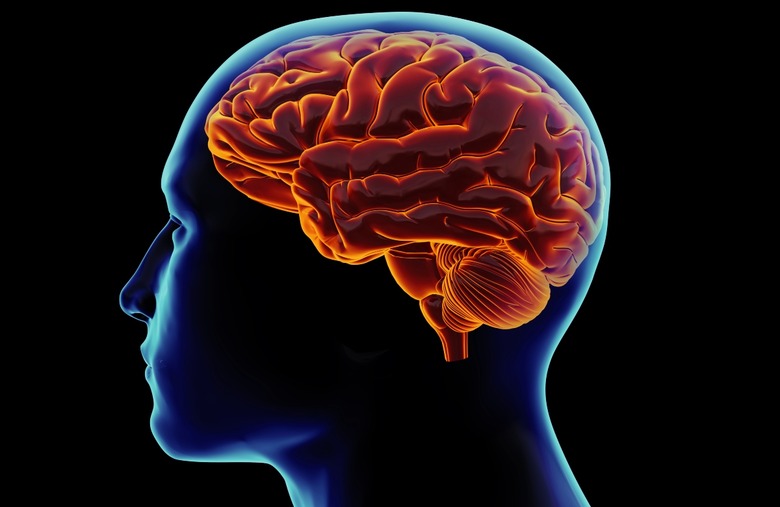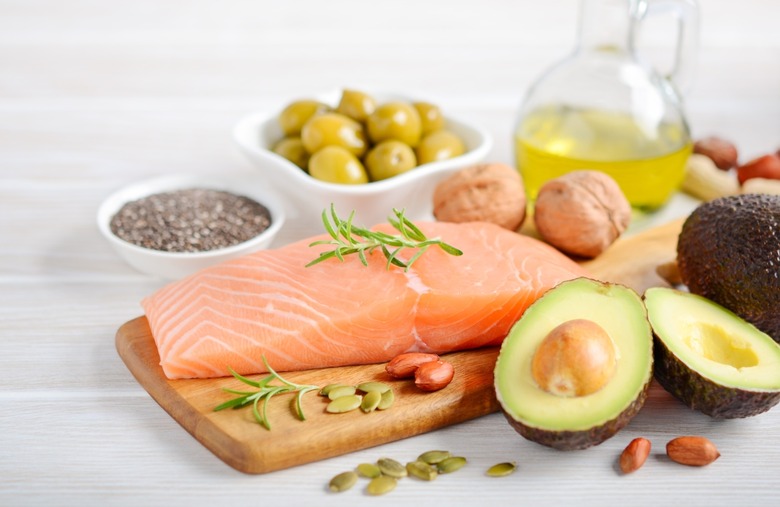Bogus Health And Nutrition Facts You Learned In School
You might have tried to block the more painful memories of health class and gym class from your brain. Learning to use a condom in front of all your peers? Sweating through running the mile on your school's scorching track? No, thank you. But as miserable as all that was, that awkward class period was a pivotal part of growing up, and still is for today's kids. For many students, health class is where they get most of their health and nutrition information.
In many ways, a lot has changed about school since you were a student. Students don't use their lockers anymore, for one, and passing notes is practically obsolete. You can no longer smoke on school grounds or get away with bullying. The curriculum taught in health class has changed a whole lot, too. Some of the nutrition tips you were taught by your health teachers have since been debunked. And you were probably subject to a myth or two about puberty, sex and other topics you dreaded during your teenage years. Here are some health and nutrition facts you learned in school that are actually bogus.
Follow the ‘food pyramid’ for a healthy diet
If you went to school in the 1990s or early 2000s, you probably recognize the food pyramid. Nutrition guidelines were mapped onto a pyramid shape divided into tiers based on different food groups. At the base of the food pyramid was the food group you were told to eat the largest serving of per day: grains. The food pyramid recommended six to 11 servings of bread, pasta, cereals, crackers and other processed carbs. Of course, eating some of these foods can be good for you and help provide fiber. But eating them as the main component of your diet? That's a lot. Due to this odd recommendation, along with others (the pyramid technically endorsed eating an 8-ounce hamburger every day), the diagram was widely criticized for being inaccurate. Today's visual for children, launched in 2011, is called "MyPlate," and it divides a plate into categories more representative of modern nutrition standards. The plate is divided into approximately 30 percent grains, 40 percent vegetables, 10 percent fruits and 20 percent protein, with a serving of dairy on the side.
Wear deodorant for your health
In elementary and middle school health education, students of previous decades were taught that deodorant was mandatory, rather than a personal grooming choice or matter of etiquette. However, wearing deodorant is not actually a preventative health measure for anything other than BO. You may prefer preteens wear deodorant so they don't stink up your space, but smelling bad isn't really a health risk. The need for deodorant is more of a social construct than anything else. And some people never experience bad body odor, finding later in life that they don't want to spend money on deodorant at all.
You can calculate the number of calories you need per day
As recently as 2010, dietary guidelines issued by the government (and often taught in health classes) listed a table of age, gender and activity level that people could consult to find their caloric range. A sedentary female child of age 10, for instance, should eat 1,400 to 1,600 calories per day, according to the table. But daily calorie needs are far from static. Research has shown that calorie needs vary wildly from person to person, and from day to day. "The number of calories of energy you need each day can vary greatly based on a lot of factors including your activity level and hormone fluctuations," registered dietitian and nutrition therapist Alissa Rumsey tells The Daily Meal. "Calculating a child's calorie needs in particular is incredibly challenging," says registered dietitian Rachael Hartley. "Children's needs are rapidly changing during growth phases, and most formulas for estimating calorie needs are inaccurate."
You should drink fruit juice every day
Back in the day, kids were taught that fruit juice counted as a serving of fruit. These drinks were served with most school lunches and at sports games during snack breaks. Your daily servings of fruit are definitely important. But drinking a cup of orange juice is not the same thing as eating an orange. Juices such as apple juice, grape juice and orange juice are a seemingly healthy drink made with a ton of added sugar. Additionally, fruit juice lacks the fiber and other compounds found in whole pieces of fruit. Drinking fruit juice instead of eating fruit is a common diet mistake people make at breakfast.
All STIs are permanent and a really big deal
During the sex education portion of health class, you were probably faced with a lot of fearmongering. Some of these scare tactics were about pregnancy, but others were about sexually transmitted infections (STIs). You were probably shown one too many gruesome images of herpes, for example. After that lesson, you walked away knowing one thing for sure: STIs were severe and they were permanent. If you had an STI, you were warned, you were stuck for life. But hopefully you've since learned this isn't true of all STIs. Many of these infections, such as chlamydia and gonorrhea, are treatable and can go away after the infected person takes a pill or is otherwise medicated. Of course, some STIs are permanent and even the impermanent ones are quite unpleasant. But if you have a smaller infection, it's not the end of life as you know it.
D.A.R.E. tactics really work
Drug Abuse Resistance Education, or D.A.R.E., was a prevention program for drug abuse, gang membership and violent behavior. Founded in 1983, it was quickly adopted by schools across America. If you attended the program, you were probably told that it taught students effective methods of resisting involvement in drugs, gangs and violence. But you also probably saw that no student took these lessons seriously. The D.A.R.E.-branded t-shirts awarded were worn ironically by drug-using teens, and the lessons themselves were often interrupted by fits of giggles. It wasn't your imagination — D.A.R.E. didn't work. Dozens of studies conducted from 1994 to 2004 proved D.A.R.E. wildly ineffective, forcing the organization to completely revamp its curriculum in 2009. The new curriculum is still being evaluated.
Counting calories is healthy for children
In response to growing concern about the obesity epidemic, many schools adopted nutrition programs where students were taught to track their food and calories. Kids were given calorie limits for the day — calculated based on those aforementioned formulas — and asked to turn in food journals for class credit. Younger students sat at dinner tables equipped with crayons to draw pictures of their plates, while older students calculated more specific numbers. But this approach to health and nutrition is not only ineffective at helping kids lose weight — it also can have some serious consequences. "Research on this kind of dieting in childhood has shown that it both increases the risk of weight gain and eating disorders," says Hartley. "Counting calories is incredibly dangerous for children, and triggering for those who are at risk for an eating disorder." Studies show that calorie counting is associated with binge eating at any age. And what starts as a seemingly innocent calorie counting can lead to an unhealthy preoccupation with the numbers; the National Eating Disorders Association lists a preoccupation with calories and other forms of food tracking as a common warning sign of eating disorders such as anorexia.
BMI is a good indicator of health
Body mass index, or BMI, is a measure of a person's body mass divided by their height that sorts people into categories of "underweight," "normal weight," "overweight" and "obese." Students were routinely weighed at school by their teachers, administrators, nurses and volunteers in the '80s, '90s and 2000s to determine BMI. They were told that this number was an accurate judge of their health. But medical professionals have since expressed a lot of concern about this practice. Not only has the usefulness of BMI been debunked (the scale was invented by an early-19th-century mathematician, not a medical doctor, for political purposes and has been scientifically proven inaccurate for diagnosing obesity), but it's also harmful for children. Studies show that using BMI in schools has harmed students' mental and emotional health, and experts are concerned that the practice will worsen weight stigma and body image while intensifying pressures on kids to try out harmful weight loss practices. However, some schools still measure student BMI.
All eating disorders look the same
When you learned about eating disorders in school, you were probably shown some photos of emaciated teens, warned against puking in the bathroom and given somewhat limited information. Health education used to omit other types of eating disorders such as orthorexia, binge eating disorder and EDNOS (eating disorder not otherwise specified). Additionally, not everyone who has an eating disorder is dangerously thin or underweight. "There are more people in 'normal' or larger bodies with eating disorders than there are people who fit the emaciated stereotype," says Hartley. "Some research has even indicated those in larger bodies suffering from an eating disorder may be sicker, possibly because their diagnosis is more likely to be missed, and sometimes even congratulated for weight loss, delaying essential treatment." Atypical anorexia nervosa is the DSM's current name for an anorexia diagnosis for someone in a larger body. According to the National Eating Disorders Association, this diagnosis is just as serious and dangerous, even though the person is not thin.
Marijuana is a gateway drug
In your school's drug abuse prevention program, you were probably told that marijuana is a "gateway drug," meaning that it leads those who use it to go on to abuse harder substances. However, according to the National Institute on Drug Abuse, the majority of people who use marijuana don't go on to do hard drugs. Smoking weed does increase the likelihood of developing or worsening alcohol abuse, though. And its use could increase your brain's response to other drugs, should you choose to try them. But it's not as if smoking a joint is a one-way track to heroin addiction, as some health curricula may have had you believe.
The Presidential Fitness Test helped kids get healthier
Today, the replacement for this program (called the Presidential Youth Fitness Program) is less of a test of athletic performance and more of an assessment of individual and overall health. But if you went to school before the Obama era, you probably had to take the dreaded Presidential Fitness Test. Throughout the year, you and your classmates were forced to endure physical challenges such as broad jumps, sit-ups and mile runs — with a side of humiliation. One by one, each student had to face their fate at the pull-up bar while the entire class watched. Students who performed in the top 15 percent received an award "signed" by the president. But this program did little to encourage kids to love fitness. Instead, it left generations of students scarred from gym class horror stories and dreading exercise in public. According to a report by NPR, even teachers felt bad for students who had to participate.
Condoms are 98 percent effective
Safe sex is one of the most important lesson plans in health class. During this lesson, students are taught that even if you use a condom, you're still at risk for pregnancy and STIs. The common belief is that condoms are 98 percent effective. However, there may be more of a risk than students are told. According to Planned Parenthood, since people often use condoms incorrectly, their actual effectiveness is closer to 85 percent. That means that 15 out of every 100 people who solely use condoms as birth control will get pregnant.
Condoms prevent most STIs
In addition to using condoms as a birth control method, students are taught to use condoms in order to prevent STIs. But condoms don't offer complete protection against all common STIs. Condoms are considered effective at preventing HIV, AIDS, gonorrhea, chlamydia and other STIs spread through bodily fluids. But they do not protect perfectly against STIs spread through skin-to-skin contact such as genital herpes, warts and syphilis.
You lose most of your eggs at age 30
At some point or another, the rumor spread that women are most fertile in their 20s and are consistently losing their eggs as they age. However, that's not altogether true. For the average woman, fertility doesn't start to decline until age 32, according to the American College of Obstetricians and Gynecologists. Even then, the decline is gradual — fertility doesn't start to rapidly decline until age 37.
You can’t get your period when you’re underwater
It's doubtful this was ever in any official state-mandated curriculum, but some may remember their swim coaches telling them this health myth. Preteen girls would be nervous about getting their period during swim practice. In response, swim coaches would tell girls not to worry — that it was impossible to get your period submerged in water, because of gravity or some other effect. But this is totally false. While hearing this may have eased your anxiety as a nervous teen, you were probably mortified if you found out the truth the hard way.
Coffee helps you sober up
This was also never officially taught, but you might have been told by a teacher or classmate that drinking coffee could help you sober up after one too many drinks. While drinking coffee does have its benefits, its sobering effects are an alcohol myth. The caffeine in coffee may make you feel more alert, but your blood alcohol concentration will remain the same, and so will your reaction time. The only thing that will sober you up is time.
Alcohol kills brain cells
No, drinking alcohol does not kill your brain cells. Even for heavy drinkers, all brain cells remain alive after a night of binge drinking. However, that doesn't mean drinking alcohol in excess won't harm your brain. Drinking too much can damage the ends of your neurons, interfering with communication that occurs between cells. According to American Addiction Centers, long-term abuse of alcohol can result in the loss of some cognitive functioning and abilities.
Brain cells can’t grow back
Not only were you told that alcohol kills your brain cells — you were also likely told that they'd never grow back. But that's just not true. Like every other cell in your body, brain cells can be regenerated and replaced. There's even a name for the process: neurogenesis.
Different areas of your tongue taste different flavors
When you learned about the five senses (more on those later), you probably were shown a tongue, mapped out into different zones. Each zone had a different sort of taste assigned to it. The sides of the tongue were labeled "sour," the back was "bitter," and at the front were "salty" and "sweet." This school lesson was based on research from the turn of the 20th century, and was scientifically disproven in 1974. When you eat a decadent dessert food, you can taste it in the back of your tongue, too. All taste buds in all locations can sense a variety of flavors. Regardless, school textbooks still showed the erroneous diagram for years afterward.
There are five senses
Everyone's heard of the five senses: taste, touch, smell, hearing and sight. But this lesson made no sense. (Ha!) You actually have more senses than five. Some experts believe you have as many as nine additional senses: temperature, kinesthetic sense (spatial awareness), pain, balance, vibration, salt concentration in your blood, need for oxygen, hunger and thirst. (Not including, of course, your sense of humor.)
Students only need to learn about heterosexual sex
Sex education has come a long way in the past 50 years and has become a lot more inclusive. Outdated sex education in previous decades largely glossed over, or entirely omitted, all topics of sex outside of heterosexual relationships. Now, not only are students taught that gender fluidity and sexual orientation exist, but they are also permitted to ask questions and talk about non-heterosexual sex. Not all students are heterosexual — so this is crucial for teaching students to practice safe sex regardless of their preferences. Additionally, students are taught how to support their friends in the LGBTQ community and are supplied with resources.
Eating fat is bad for you
Government nutrition guidelines used to recommend eating less fat, which was why your parents probably tried a low-fat diet fad or two. "For the U.S. population as a whole, reduction in our current total intake of fat is sensible," USDA guidelines for 1980 read. However, more recent research has shown that fats, especially unsaturated fats such as those found in olive oil and avocados, are quite good for you. There are lots of important health benefits of fats that a low-fat diet misses out on.
The biggest risk of eating too much sugar is cavities
Back in the day, you were warned against eating too much sugar. But it wasn't for most of the reasons people talk about today. Heart disease, diabetes, cancer... All those concerns came later. Until recently, the main concern about sugar was cavities. "The major health problem from eating too much sugar is tooth decay (dental caries)," the 1980 guidelines said. "Contrary to widespread opinion, too much sugar in your diet does not seem to cause diabetes." Of course, now people know that the concerns are much larger.
You should avoid MSG
You were probably taught at some point that MSG is bad for you. As a result, you were warned against eating too much of it and cautioned that it was one of the unhealthy hidden ingredients in Chinese takeout. People believed that it caused headaches, asthma and brain damage. But MSG, an ingredient that's been used in food for over 100 years, is perfectly fine for your health. Studies show that it has none of those effects, and is in fact only unsafe to eat if you are allergic. If you're allergic to MSG, you'll know — the symptoms of food allergies are pretty hard to ignore.
You should avoid cholesterol
Cholesterol was largely misunderstood until the late '90s. The old logic was that since high levels of cholesterol in the blood are bad for you, eating dietary cholesterol is bad for you, too. As a result, nutrition education dictated that eating cholesterol-heavy foods (such as shellfish, eggs, full fat dairy and fatty fish) was harmful and should be avoided. But dietary cholesterol and blood cholesterol are two very different things. In fact, for some people, studies show that eating foods with cholesterol — in moderate amounts — could be good for your cholesterol and, therefore, heart health. Instead of freaking you out about cholesterol, your teachers should have been warning you away from these habits cardiologists say are the worst for your heart.
More from The Daily Meal:
Your Parents Probably Tried These Old-School Diet Tips
Childhood Breakfasts You Forgot Existed
What Dinner at Home Was Like 50 Years Ago
Childhood Traditions We Now Realize Were Super Gross
Diet Changes You Should Make After 50
